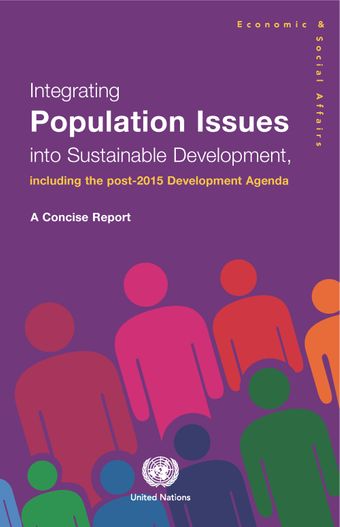- Home
- Books
- Integrating population issues into sustainable development, including in the post-2015 development agenda
- Chapter
Preparing for growing numbers of urban residents

- Author: United Nations
- Main Title: Integrating population issues into sustainable development, including in the post-2015 development agenda , pp 27-29
- Publication Date: February 2015
- DOI: https://doi.org/10.18356/b7e4d680-en
- Language: English
Cities are currently home to more than half of the world’s population, and all of the 1.1 billion increase in global population over the next 15 years is expected to occur in urban areas. All regions, with the exception of Europe, are projected to record increases in the sizes of their urban populations of at least 15 per cent. Africa and Asia are projected to have the largest increases in the sizes of their urban populations (see table 4). Further, the number and size of the world’s largest cities are unprecedented. At the beginning of the twentieth century, only 16 cities contained 1 million people or more. Today, there are over 500 such cities and many of the most rapidly growing cities are located in countries least able to keep up with the demand for housing and basic services. Megacities, defined as urban agglomerations of 10 million inhabitants or more, have also become both more numerous and considerably larger in size. In 2015, 6.4 per cent of the world’s population resides in megacities. By 2030 that proportion is expected to increase to 8.7 per cent.
© United Nations
ISBN (PDF):
9789210574266
Book DOI:
https://doi.org/10.18356/8850f58b-en
Related Subject(s):
Population and Demography
Sustainable Development Goals:
-
From This Site
/content/books/9789210574266c009dcterms_title,dcterms_subject,pub_keyword-contentType:Journal -contentType:Contributor -contentType:Concept -contentType:Institution105
/content/books/9789210574266c009
dcterms_title,dcterms_subject,pub_keyword
-contentType:Journal -contentType:Contributor -contentType:Concept -contentType:Institution
10
5



